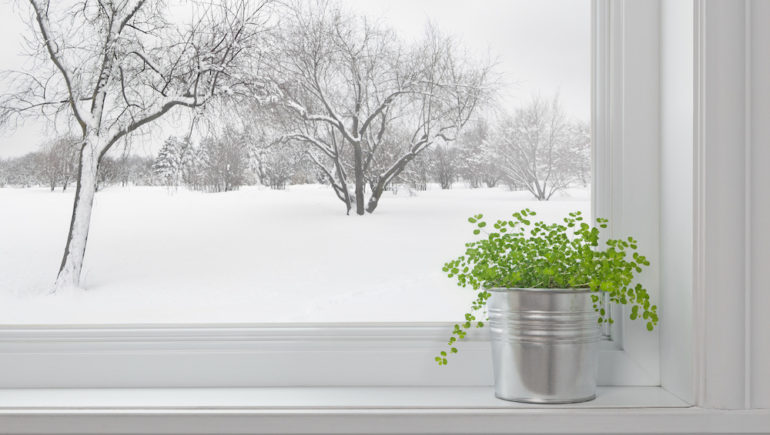Your houseplants may have flourished while basking in the summer sunshine outdoors, but come winter, it’s time to move those plants inside. You may also have garden plants you hope to protect through the cooler months by moving them indoors. With either type of plant, there are certain steps you need to take to help your plants weather the transition. Here’s a primer on moving plants indoors for the winter.
Which plants should you move inside?
Moving garden plants such as rosemary, geraniums, begonias, coleus, caladiums, impatiens and pentas indoors for the winter makes sense if you want to keep them going. On the other hand, there’s no reason to bring in true annuals such as petunias, marigolds and zinnias.
Tropical houseplants won’t survive if left outside in the winter. They should come indoors once nighttime temperatures drop to 50 degrees. Other houseplants and garden plants can remain outside until night temperatures drop to 45.
Transitioning plants indoors
Ease the transition for plants that have been used to outdoor sunshine by first moving them to a shady spot outdoors for a couple of weeks. Next, bring the plants inside for the night but return them to their outdoor home in the daytime. Slowly extend their time inside until they are fully indoors.
Steps to take before moving plants indoors
Once you’re ready to move your plants indoors for the winter, here are the steps to take.
- Remove dead areas and leggy growth. Garden plants like perennials may need to be cut back. Repot plants if needed.
- Look carefully for bugs so your outdoor plants won’t bring pests inside. Inspect the soil, the tops and bottoms of leaves and all areas of the plant’s pot, including its drainage holes. Spray pests with insecticidal soap or neem oil. Alternatively, if your plant’s pot has drainage holes, you can remove pests by immersing the plant in its pot in a bucket of water mixed with a few drops of mild soap. Let the plant soak for 15 to 20 minutes. Scrub the exterior of the pot, then rinse the plant and pot thoroughly with a hose and let the plant drain completely.
- Refresh the soil to add nutrients by scraping off the top layer and replacing it with fresh dirt.
- If you have not soaked the plant to remove bugs, thoroughly rinse it with a hose and let it drain completely.
Making your plants feel at home
Once inside, your plants will need good drainage and air circulation. Water plants less frequently when they’re inside for the winter. Wait until the soil is dry to the touch. Avoid fertilizing until spring.
Plants that spend most of the year outside need to get as much light indoors as they got outside. Place them in south-facing windows that have been recently cleaned or beneath grow lights. Avoid drafty areas.
Because indoor air can be dry, provide your transferred plants extra moisture by running a humidifier or misting them with water. Or you can place them on a pebble tray. Line a tray with waterproof material, then fill it with gravel. Place the plant pots on the gravel and keep the stones wet.
Related – How to Choose the Perfect Houseplants


